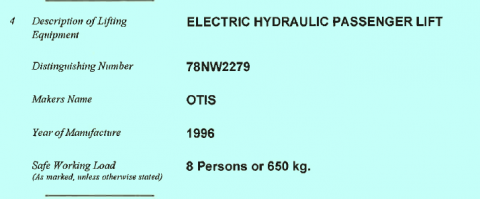

Once again our newsletter is focused on the changes in lift standards and their practical application. In late 2012 the British Standards’ BS7255: Code of practice for safe working on lifts, was released, replacing the 2003 standard following several high profile accidents and near misses.
While working with one of our clients this month, we have been helping them review their own portfolio in relation to the changed standards, and thought we would bring them to your attention too.
The following paragraph has been taken directly from the standards and should offer some guidance relating to the health and safety of the lifts in your own portfolio.
Suggested improvements for consideration by the owner with particular reference to safe working on lifts: Lifts tend to fall into the following categories. a) Those built before 1 July 1999 without any modification. b) Those built before 1 July 1999 with modifications. c) Those built in accordance with the relevant part(s) of the Lifts Regulations 1997 [2]. Lifts in categories a) and b) are likely to have lower standards of safety than lifts in category c). Owners of lifts in categories a) and b) are encouraged to undertake a programme of improvements according to BS EN 81-80 to bring the lifts to the requirements of current standards.
Many of the items relating to lift health and safety are for the protection of personnel working on the lifts and need to be considered in the context of the Health and Safety at Work Act 1974. Additionally, there are many items within EN81-80 that are specifically for the safety of lift passengers.
If in doubt over the age of your lifts, the insurance inspection (LOLER) reports should offer guidance as detailed.
Should you have any queries or concerns with the above, we would be pleased to chat to you and your teams on the various options available to ensure you are fulfilling your duties, while helping you to provide your clients with safe lifts.


Recent Comments